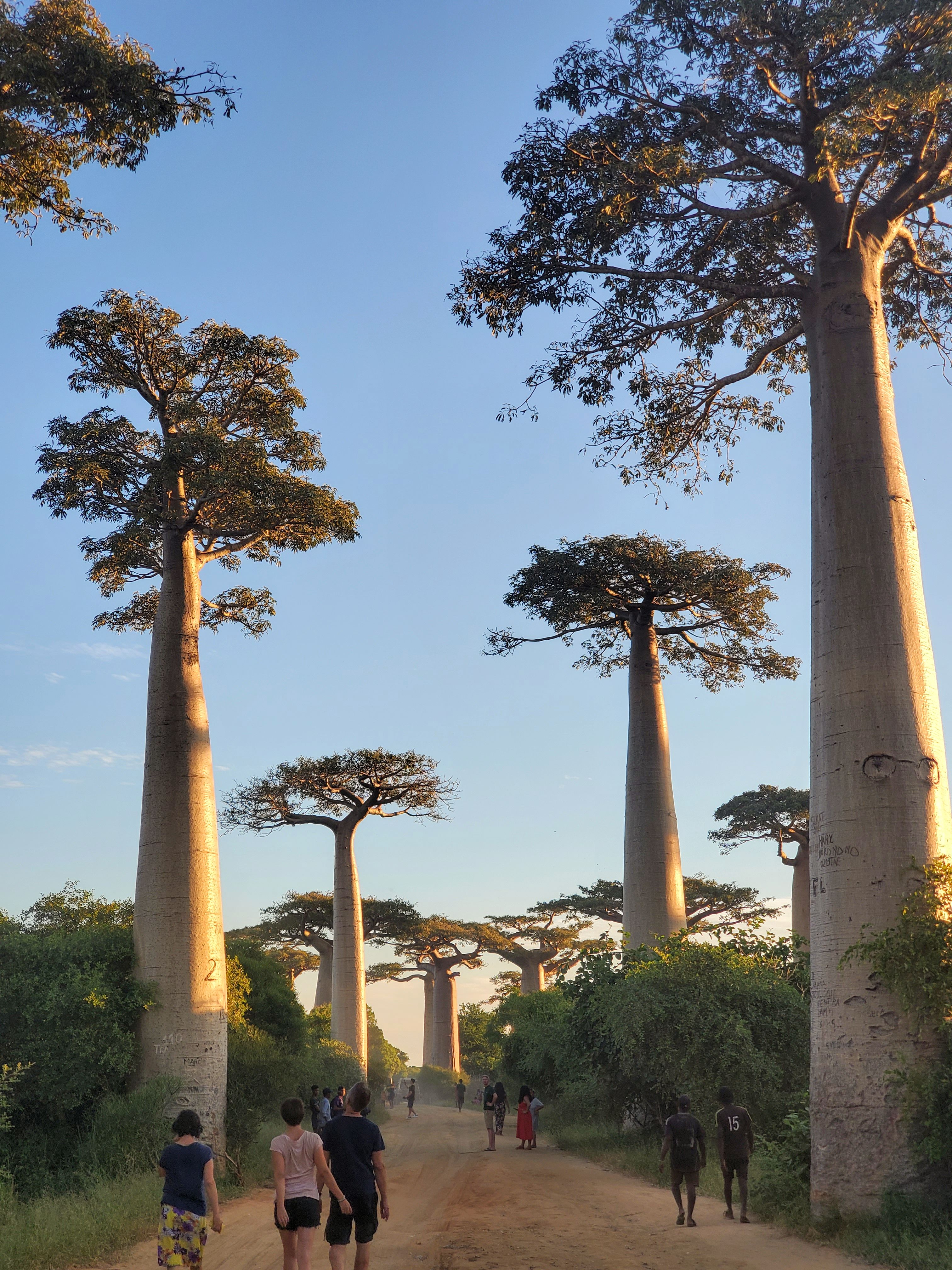Lesser Bamboo Lemur
It is generally found in the humid forests along the east coast of Madagascar, more specifically in forests of giant bamboo. Its diet consists mainly of young bamboo shoots, which it is particularly fond of.
It is the smallest of the diurnal lemurs, and there are three species. It measures 25–30 cm excluding the tail and weighs around 800–900 grams. Its habitat includes primary or secondary forests where large expanses of giant bamboo grow.
- Hapalemur griseus griseus (Link, 1795)
- Lesser Bamboo Lemur
The Hapalemurs are the smallest of the diurnal lemurs, with adults weighing between 700 and 800 grams. Lesser Hapalemurs are distinguished by their dark gray fur and monkey-like face (with a flat snout similar to that of monkeys).
This species lives in the rainforests of eastern Madagascar. Its natural habitat is bamboo, with thirty-two species of bamboo endemic to the island. They feed primarily on bamboo shoots and young bamboo leaf petioles — these two items make up about three-quarters of their diet. They rarely descend to the ground, except when searching for grass shoots or mineral salts.
Occasionally, they consume soil, which helps with digestion due to the high amount of cyanide contained in their bamboo-based diet. Despite this, their metabolism is well adapted to handle this potent toxin.
They live in groups of two to six individuals, with males, females, and young cohabiting in perfect harmony. Their lifespan ranges from 20 to 25 years.
Their territorial call resembles the cry of a newborn baby (“mouin, mouin…”), while their contact call sounds like the creaking of an old wooden door (“mwouii, mwouii…”).
Births usually occur between October and January, after a gestation period of 135 to 140 days. Typically, there is one birth per year, with a single offspring.
At Lemurs’ Park, and at an unusual time of year, a female Lesser Hapalemur gave birth to a beautiful baby. When the family moves, the mother carries the baby in her mouth for 2 to 3 weeks to ensure its safety.
Born in March, the young is now a juvenile, and its mother is encouraging it to become independent. Nursing lasts for about 14 weeks, after which the young lemur must learn to feed itself by observing and imitating its mother.
The main predators of these charming lemurs include the Fosa (Cryptoprocta ferox) — the island’s only native carnivore — raptors, and the arboreal boa of Madagascar.
Sadly, humans also pose a threat by removing them from their natural habitat to keep as pets, drastically reducing their life expectancy.
Although Hapalemur griseus griseus may be the cutest of all lemurs, it is still a wild animal. Let us protect it and respect it as a vital part of Madagascar’s unique wildlife heritage.

.png)

